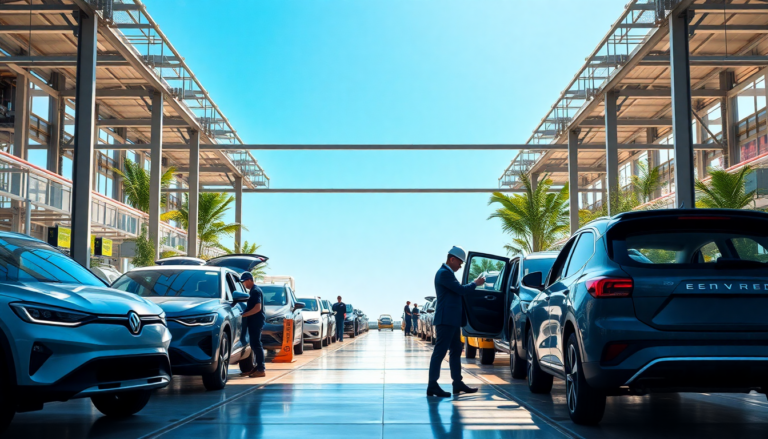Argomenti trattati
The automotive industry is at a crossroads, playing a crucial role in the global fight against climate change. Did you know that it accounts for over 20% of greenhouse gas emissions? As we gear up for 2025, it’s vital to take a closer look at the climate strategies of major manufacturers. In this analysis, we’ll dive into the commitments and progress made by five key players in the light-duty vehicle sector: Ford, General Motors, Stellantis, Toyota, and Volkswagen. By examining their greenhouse gas (GHG) emission reduction targets and transitions within the sector, we can better understand how aligned they are with the goal of limiting global warming to 1.5°C.
Current State of the Automotive Sector’s Climate Strategies
In recent years, the automotive sector has come under increased scrutiny for its environmental impact. The urgent need to move away from internal combustion engine vehicles has placed manufacturers in the spotlight, pushing them to establish credible short- and long-term emission reduction targets. However, a recent evaluation indicates that many companies are still lagging behind, lacking robust climate strategies to effectively tackle the necessary transitions toward sustainable practices.
Automakers need to prioritize effective measures that not only meet current regulations but also exceed them, aiming for a genuine impact on emissions reduction. The urgent call for credible climate strategies is amplified by consumer demand for eco-friendly mobility options. It’s clear that the journey toward sustainability isn’t just a regulatory requirement; it’s also a market imperative. How can manufacturers ignore the voices of consumers who want greener choices?
Challenges and Opportunities in Setting Decarbonization Targets
Despite the pressing need for action, many of the manufacturers under review have yet to set credible decarbonization targets. This gap highlights a broader challenge within the industry, where companies often grapple with balancing immediate financial goals against long-term sustainability aspirations. Without clear emissions targets, the progress needed to achieve significant GHG reductions can be severely hindered.
Yet, there’s a silver lining! The automotive sector has enormous potential for emissions reduction, especially as manufacturers begin to phase out internal combustion engines in favor of electric and alternative fuel vehicles. Achieving these ambitious goals will require collaboration among automakers, regulatory bodies, and standards setters. Strong incentives for necessary action could pave the way for the industry to meet its climate commitments head-on. Are automakers ready to embrace this challenge?
Future Outlook and Recommendations
Looking ahead, it’s essential for automotive manufacturers to take a more proactive approach to climate change. The analysis emphasizes the need for actionable plans that concentrate on key sectoral transitions. By establishing clear and credible decarbonization targets, manufacturers can not only comply with regulations but also set themselves apart as leaders in the shift toward sustainable mobility.
As highlighted in the 2025 Corporate Climate Responsibility Monitor, the automotive sector must recognize its role in the larger climate action narrative. This involves understanding the interconnectedness of their operations with the global climate crisis and taking decisive steps to mitigate their impact. By fostering innovation and investing in sustainable technologies, the automotive industry can transform the challenges posed by climate change into opportunities for growth and leadership in the market. So, what’s next for the industry? Will they seize the moment or be left behind as the world moves toward a greener future?

